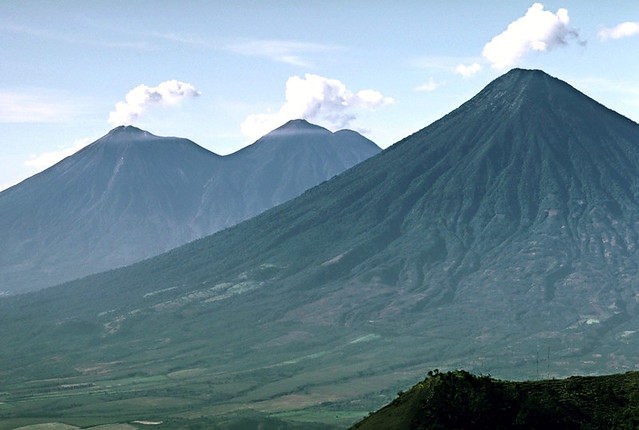SHAKEN EARTH
by Martin Mariano Barillas
At
times the best way to learn about another country is not from an academic history
book, but rather from historical fiction, principally written by an author
whose family lived that history which was handed down orally through
generations. Such is Shaken Earth, a dynamic
first novel by Martin Barillas whose father lived in the Guatemalan era of the
1930s and beyond. This novel should be required reading for anyone traveling to
Guatemala today.
Guatemala
is home to many volcanoes and earthquakes, hence the name Shaken Earth, however the earth shakes in other ways there with
dark politics, insurrections and the overthrow of Central American governments
in order to build banana republic dictatorships created to accommodate United
Fruit Company and vast international coffee plantations. Barillas describes
Guatemala in the 1930s as a country “where there was a scrim of European
culture overlying a Creole blending of Spanish conquistador ethics and Maya
traditions with the addition of Yankee business and diplomatic acumen.”
Among factual
historical events and characters – massacres of indigenous Indians, volcanic
eruptions, President Jorge Ubico y Casaneda, General Maximiliano Martinez, President
Arturo Araujo to name a few – the fictional characters in Shaken Earth live their lives against the vast panorama of the
history of the times. The tentacles of WWI, the rise of Hitler in Germany, the
Russian and Mexican Revolutions, Bolshevism and the spread of communism across
the globe reached Central America and had an effect on the everyday lives of
millions of people, rich and poor, Ladinos and native Mayan Indians in
Guatemala, Honduras and other Central and Latin American countries. In
addition, “the smoldering resentment of centuries of oppression, exacerbated by
expropriation of communal lands just decades before, had been sharpened by the
spread of revolutionary ideas from Mexico and Russia”. Revolution was in the
air.
 |
| Left to right - Volcanoes Agua, Fuego and Acatenango |
Monsignor
Ismael Ferrer, a Spanish priest “living so far from home in a land he still
hardly understood after decades”, is manipulated into vacating his post by the
“velvety dismissal of the archbishop”. Returning to certain martyrdom in
pre-Spanish Civil War Spain, Fr. Ismael finds his destiny through the love and
courage he thought he did not possess.
American
travel writer Bronwyn Morrison, always on the move – from the WWI hospital wards
of Belgium to England to Ireland to New Orleans to Guatemala – searches for the
home she never had. For fourteen years after the war she “never stayed long
anywhere, having not yet reached a definite destination” because “a destination
was but the name of the next onward interface of time and place on an
unremitting gyre”.
| Martin Barillas |
From describing
New Orleans and Cuba, gunrunners, machine guns, lavish diplomatic feasts, to
the huts of the Indians cooking their maize and using their ancient healing
arts to cure people, Martin Barillas is a gifted writer whose imagery is
unsurpassed. His description of characters reaches the essence of their being,
their intrinsic nature. Bronwyn in her “gingery tantrum” firmly brushes her
hair as “though she were exorcising it from fiends.” Ismael’s piercing
intellect reads Soledad’s troubled soul when he says of Mariano, “Burning it
all down suggests a dark offense or even hatred.”
Likewise,
Barillas’ descriptions of Guatemala are beautifully poetic: “Parakeets that had
filled the limbs of a dead tree near the dock suddenly flew away in a living
green cloud…” and, “Silvery little fish darted from the surface to elude the
maws of the shoals of tarpon that slashed through the dark water like sabers
through velvet.”
In the
end, we see the fabric flipped so it can be viewed clearly from the front.
Barillas intertwines the unconnected individuals who then unwittingly help each
other meet their unsuspected destinies. Through each other they find a glimmer
of hope for the future – a future which lies within Martin Barillas’ next novel
– the sequel to Shaken Earth which is
to be placed in the historical context of Guatemala in the 1950s.


No comments:
Post a Comment